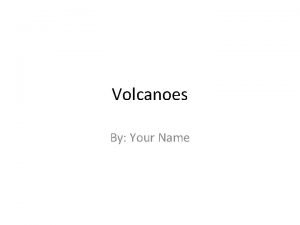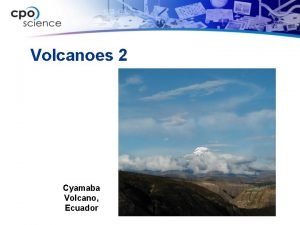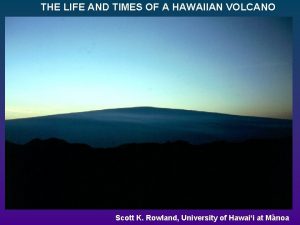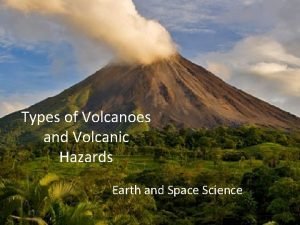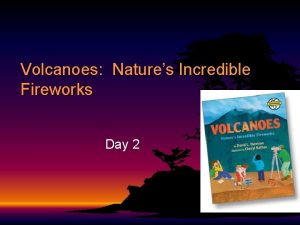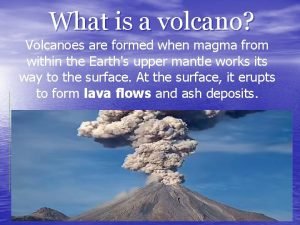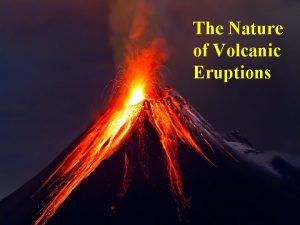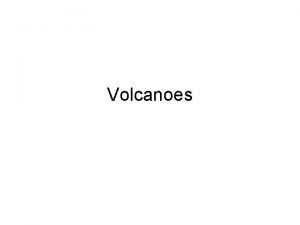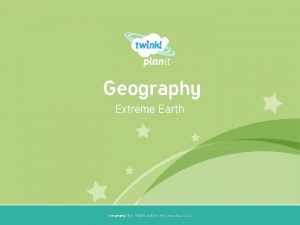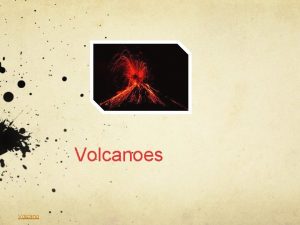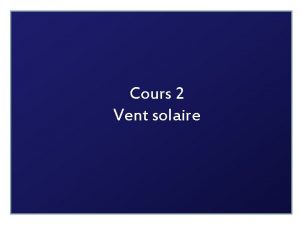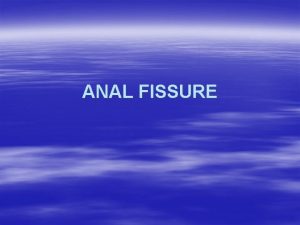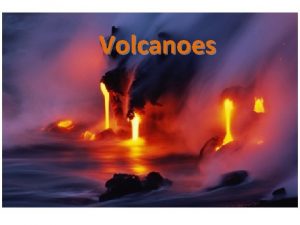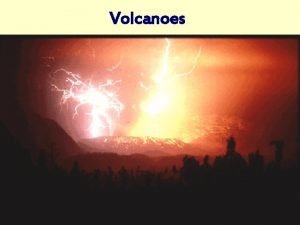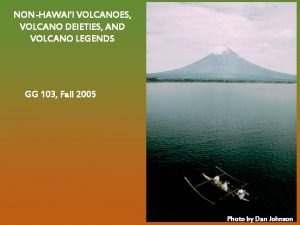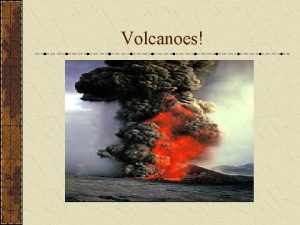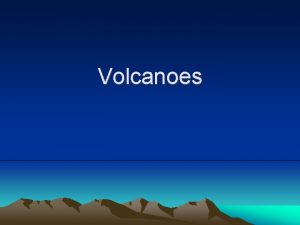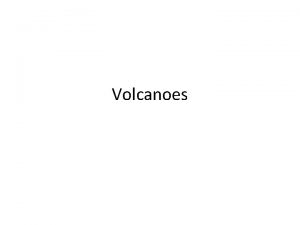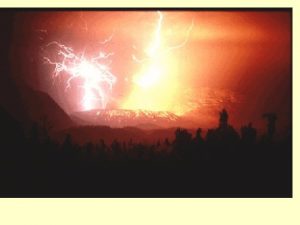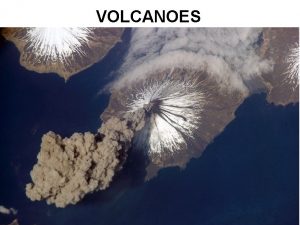Ch 13 Volcanoes Volcano A vent or fissure












- Slides: 12

Ch. 13 Volcanoes Volcano: A vent or fissure in Earth’s surface through which magma and gases are expelled. • Often volcanoes look like mountains. • There are three major types of volcanoes.

Most chains of volcanoes exist where oceanic crust subducts beneath continental crust Happens at a convergent boundary


Magma: Liquid rock produced under the Earth’s surface that is formed when crust melts. • Can melt in three ways • High temperature • Pressure causes the melting point to be lower • Water makes the melting point lower Volcanism: Activity that includes the movement of magma toward or onto the Earth’s surface.

Hot Spot: A volcanically active area on Earth’s surface, commonly far from a tectonic plate boundary.

Caldera: A large, circular depression that forms when the magma chamber below a volcano partially empties and causes the ground above to sink.

Ch. 12 Earthquakes: Movements of the ground caused by a sudden release of energy when rocks along a fault move. San Andreas Fault, California Marina District, San Francisco, CA

Earthquakes are caused by sudden movements of tectonic plates. -Usually at transform boundaries - Frequent earthquakes in a given zone are evidence that two or more plates may meet in that area.

Parts of an Earthquake Focus: The location along a fault in the Earth where the first motion of an earthquake occurs. Epicenter: The point on Earth’s surface that is directly above an earthquake’s starting point. Surface wave: A seismic wave that travels along a medium and has a stronger effect near the surface than on the interior

Studying Earthquakes Seismograph: An instrument that records vibrations in the ground. Magnitude: A measure of the strength of an earthquake. • The higher the number the stronger the earthquake is. The strongest earthquake recorded was a 9. 5! Intensity: The amount of damage caused by an earthquake.

Tsunami: A giant ocean wave that forms after a volcanic eruption, undersea earthquake, or landslide.

Tsunami • Most often caused by an underwater earthquake – Transform boundary Results in major destruction and flooding
 A dome mountain forms when _____.
A dome mountain forms when _____. Cotapoxi
Cotapoxi Volcanoes on oahu
Volcanoes on oahu Types of volcanoes
Types of volcanoes Volcanoes nature's incredible fireworks
Volcanoes nature's incredible fireworks How volcanoes are formed
How volcanoes are formed Factors affecting magma viscosity
Factors affecting magma viscosity Paricutin materials extruded
Paricutin materials extruded Most volcanoes occur __________. *
Most volcanoes occur __________. * How are volcanoes made
How are volcanoes made Volcanoes of italy map
Volcanoes of italy map Ring of fire volcanoes
Ring of fire volcanoes Explain the theory of plate tectonics.
Explain the theory of plate tectonics.
